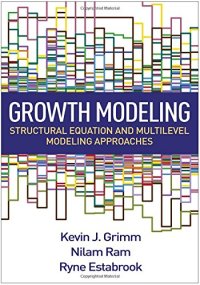
Ebook: Growth Modeling: Structural Equation and Multilevel Modeling Approaches
- Tags: Statistics, Education & Reference, Business & Money, Statistics, Applied, Mathematics, Science & Math, Research & Theory, Nursing, Methodology, Social Sciences, Politics & Social Sciences, Research, Social Sciences, Politics & Social Sciences, Education & Teaching, Higher & Continuing Education, Schools & Teaching, Studying & Workbooks, Test Preparation, Business & Finance, Accounting, Banking, Business Communication, Business Development, Business Ethics, Business Law, Economics, Entrepreneurship, Finance, Human Resources, I
- Series: Methodology in the Social Sciences
- Year: 2016
- Publisher: The Guilford Press
- Edition: 1
- Language: English
- pdf
Growth models are among the core methods for analyzing how and when people change. Discussing both structural equation and multilevel modeling approaches, this book leads readers step by step through applying each model to longitudinal data to answer particular research questions. It demonstrates cutting-edge ways to describe linear and nonlinear change patterns, examine within-person and between-person differences in change, study change in latent variables, identify leading and lagging indicators of change, evaluate co-occurring patterns of change across multiple variables, and more. User-friendly features include real data examples, code (for Mplus or NLMIXED in SAS, and OpenMx or nlme in R), discussion of the output, and interpretation of each model's results.
Pedagogical Features:
*Real, worked-through longitudinal data examples serving as illustrations in each chapter.
*Script boxes that provide code for fitting the models to example data and facilitate application to the reader's own data.
*"Important Considerations" sections offering caveats, warnings, and recommendations for the use of specific models.
*Companion website supplying datasets and syntax for the book's examples, along with additional code in SAS/R for linear mixed-effects modeling.
Pedagogical Features:
*Real, worked-through longitudinal data examples serving as illustrations in each chapter.
*Script boxes that provide code for fitting the models to example data and facilitate application to the reader's own data.
*"Important Considerations" sections offering caveats, warnings, and recommendations for the use of specific models.
*Companion website supplying datasets and syntax for the book's examples, along with additional code in SAS/R for linear mixed-effects modeling.
Download the book Growth Modeling: Structural Equation and Multilevel Modeling Approaches for free or read online
Continue reading on any device:

Last viewed books
Related books
{related-news}
Comments (0)